It starts in the parking lot. Ice time is a privilege and they only get 45 minutes of it. So, in order to be truly effective, Bobby-Jo Hekob starts every practice, no matter the temperature, standing outside of the Cranbrook Memorial Arena in Cranbrook, B.C. She’s tall, solid in build and demeanour, her hair cut blunt and long — classic, unfussy.
There, waiting in the parking lot, she can greet each player as they arrive. She can see who got dropped off by a parent. Who slammed the door in frustration. Who smiled and waved. Who walked up carrying a heavy hockey bag all on their own. Who had help. Who trudged towards the rink, and who bounded up with enthusiasm. “Coach Bobby-Jo!” they say, almost all of them, with big smiles. They love all of their coaches, but Bobby-Jo is the constant. They also love hockey. They might have found their way to it, and to that love, without Bobby-Jo. But they are here right now because of her.
They are all girls. (The program is trans-inclusive and non-binary kids who want to participate would be welcomed with open arms, as well, but they haven’t revealed themselves yet.)
And because Bobby-Jo is there to greet them, she knows how each of the many players who now make up the female development program is doing when they hit the ice. This makes her a great facilitator, but she’s much more than that.
“When I picture Bobby-Jo, it’s with these handfuls of hockey gear, trying to make sure everyone feels like they belong,” says Sally Haine, whose daughters play in the program.
“I think the female development program exists because it gives girls a chance to play hockey who normally wouldn't play,” Haine’s daughter, 12-year-old Brooklyn, says. In her case, that means she will keep trying to level up, starting with trying to make the under-13 rec team. “I see myself playing hockey as an adult,” she says.
The program would “one hundred per cent” not exist without Bobby-Jo, Haine says.
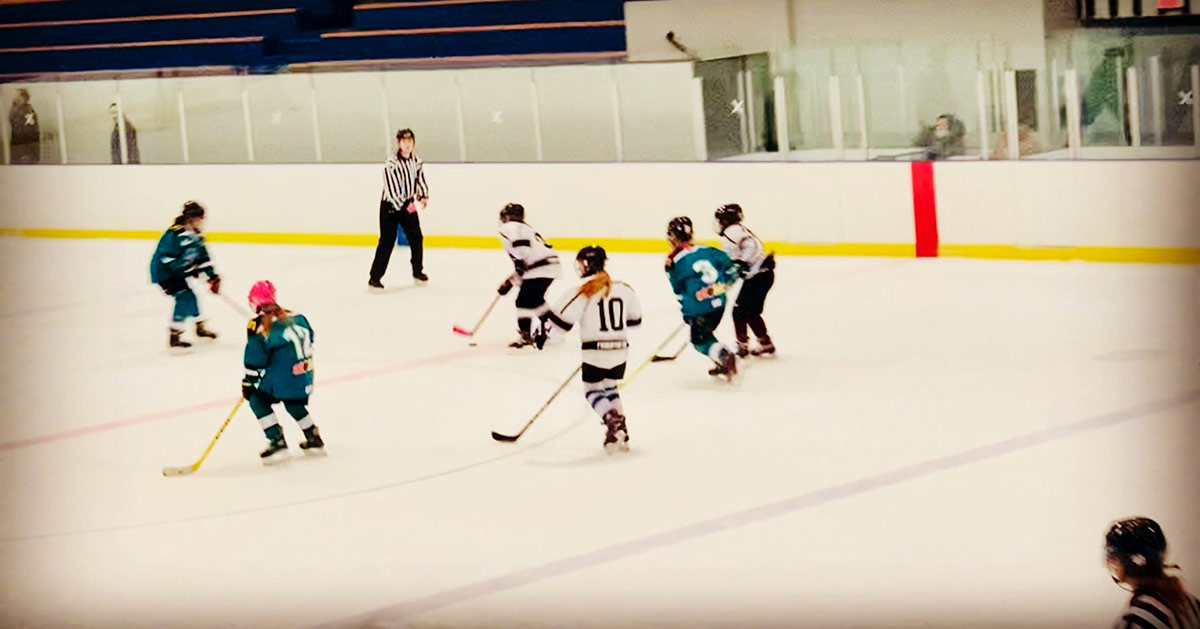
Here’s where Bobby-Jo would interrupt me. Maybe even earlier. She’d firmly, humbly insist that this whole thing doesn’t exist because of her, that she has a lot of help. Sure, she started it, but the players, parents, coaches and community members who support her are the reason she is able to carry on. She would (and did) furnish me with a list of names she wanted me to mention (Randi Lynn Morrison, Desiree Janowicz, Todd Kostiuk). And she’d be right — it’s not a one-woman operation. But veins can only move the blood the heart pumps, and without Bobby-Jo, those veins run empty.
The NHL was the dream — for boys
Where I grew up, in the Kootenay region of southeastern British Columbia, hockey permeated almost every part of the social fabric of daily life — from school to community, from childhood through adulthood. My father played through his youth; his old skates hung in the basement like an image from a Tim Hortons commercial. My mom was the president of our local hockey club. We billetted players from the U.S. and Russia. Even a thoroughly unathletic kid like me was drawn in as a spectator. The closest major city with an NHL team, Calgary, Alberta, was a three-hour drive away, and the possibility of becoming a player in the NHL seemed real to many kids I grew up with. It was the dream.
That is, it was the dream for boys.
Girls knew they never would play in the NHL and therefore, in a certain sense, hockey wasn’t made for them. This didn’t stop the Fernie Bladerunners, which my stepsister played for in high school, from becoming provincial champions. It doesn’t stop women across Canada from becoming Olympians, either, which was made abundantly clear by this year’s gold medal performance in Beijing.
But those players know that if they have a future in hockey past a certain point, it is likely off the ice, behind the scenes, behind a desk. A few can become coaches, but it’s unlikely that every woman on a team, no matter how good they are, has a real, lasting career on the ice ahead of her.
Tyrell Moulton, who has one daughter* in the female development program, went from semi-pro in the WHL to pro in the Dallas Stars training camp and farm system, all by age 21. He stopped playing “due to a few too many concussions” but otherwise would have continued, potentially in the NHL.
By contrast, Jenn Stevens, a friend of Bobby-Jo’s who coaches her own version of the program in a nearby town, was a Fernie Bladerunner, too, a few years after my stepsister. She loved hockey, and when high school was over she moved to England to keep the momentum going. But when she got back to Canada four years later, she says, “there wasn’t anywhere for me to play, other than beer league.” The level of play she wanted wasn’t available to her.
Both Moulton and Sally Haine remember a time when their daughters would not have had any hockey options at all. Until very recently, their only option would have been a mixed league, which doesn’t always work for girls.**
“I’ll use my littlest as an example,” says Haine. “She doesn’t like playing with the boys cause they don’t actually pass her the puck.” But playing with other girls, “they don’t care if you’re the all-star. They’re gonna pass you the puck, because they’re all out there for the same reasons.”
Which brings us back to Bobby-Jo. In the empty nest years after her kids graduated from high school, she found herself itchy, in need of distraction. At a time when most parents would be grateful for the breathing room, Bobby-Jo sought purpose.
In 2011, Bobby-Jo began volunteering on the Cranbrook Minor Hockey board, and in 2016 she began working for the association, in the office. The experiences taught her that ice time was currency. And it correlated to enrolment. Boys enrolled and stayed. Girls joined mixed teams, and then many of them left. To some, this data seemed to say: Girls don’t like hockey. To others: Girls can’t hack it in hockey.
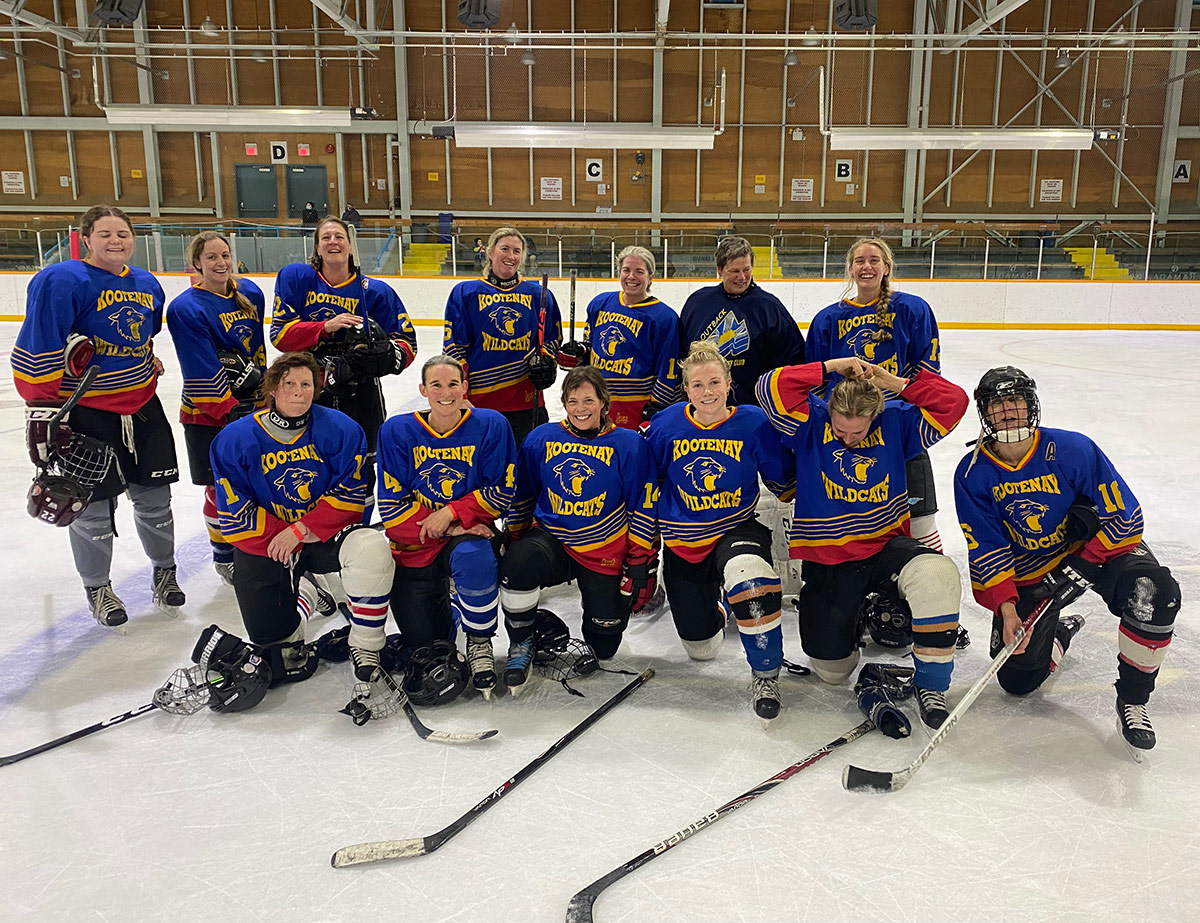
She hadn’t played hockey growing up, but when her son started Bobby-Jo joined a pickup league with women she knew. “I kind of made myself go and learn it,” she says. She found it thrilling and fun, good exercise. She wondered if something else was going on with the girls who quit. So she decided to watch them play.
After she left the minor hockey office in 2020, Bobby-Jo started working in both the local addiction crisis centre and the women’s shelter. She noticed that girls who were not heard and believed, and who struggled to stand up for themselves, often became the women she worked with at the shelter. They had been chipped away at, shoved aside and forgotten, and were therefore more susceptible to addiction, abuse and neglect.
“When I started working in the vulnerable sector someone asked me, ‘What can we do for these women, to change their lives?’ My answer was, well, you have to go back,” she says. “Instead of pulling these women out from downstream at the end, let's go upstream and see why they're jumping in.”
Bobby-Jo brought these observations to watching the girls who signed up for minor hockey. “They don't get ice time. They don't get the passes and they don't get puck touches. They don't get the development,” she says.
The boys on the ice would ignore them, or the girls would try to act cool and not engage with play, worried about how the boys would see them or treat them, what they might say. Coaches weren’t spending time with them. Furthermore, pep talks, bonding and other team business happened in the locker room, where the girls were not allowed to go.
At every turn, the girls were shut out. So naturally, hockey wasn’t fun and they quit. It wasn’t that they couldn’t hack it in hockey — it’s that hockey didn’t make space for them.
Bobby-Jo went to the minor hockey office with an idea.
“If you say, ‘I need girls’ ice,’ they say, ‘Oh, sure. We'll give you the scraps on Fridays, the scraps on Sundays.’ Like as long as you don't take ice away from those boys, you can have whatever you want. And they feel like they're helping you, right?” she says.
She presented the facts: there is this bit of ice time here. No one is using it, and I won’t trample on the time you gave the boys. Just give me this. If it doesn’t work, I’ll scrap it. And I’ll do all the work. They said yes.
The female development program began in 2018 with a single bargained-for 45-minute block of ice time. It was the first of its kind in the region. The goal was simple: give girls their own ice time, with female coaches and the flexibility to learn and grow.
As Bobby-Jo puts it: “You can't build the program without the ice. And if you can't get the ice, you can't build the program.”
At the beginning, 18 girls enrolled. By 2021, girls enrolment in Cranbrook reached 85 players, and it shows no signs of slowing. The players are five to 15, and the retention rate is nearly 100 per cent.
This isn’t to say these players all fled the mixed teams; many of the girls in the development program play on boys teams too. Jodi Hoyt, a hockey mom with one daughter* in Bobby-Jo’s program, makes it clear that her daughter Shane loves both the program and her mixed team. But there’s an interesting perspective shift that occurs on game day. “With her boys team, she's like, ‘Oh, we have Legacy and Evan. We're totally gonna win tonight.’ But when she has the girls game, it’s, ‘Oh we have me and Kianna on the team. We're gonna win tonight.’”
Sally Haine’s other daughter, 14-year-old Calissa, loves a girls-only hockey option. Long term, she’s not interested in a career in hockey, but she would like to have a women’s rec team to join. The girls’ program exists, she says, “to keep girls active and not judged by other players,” which works for her.
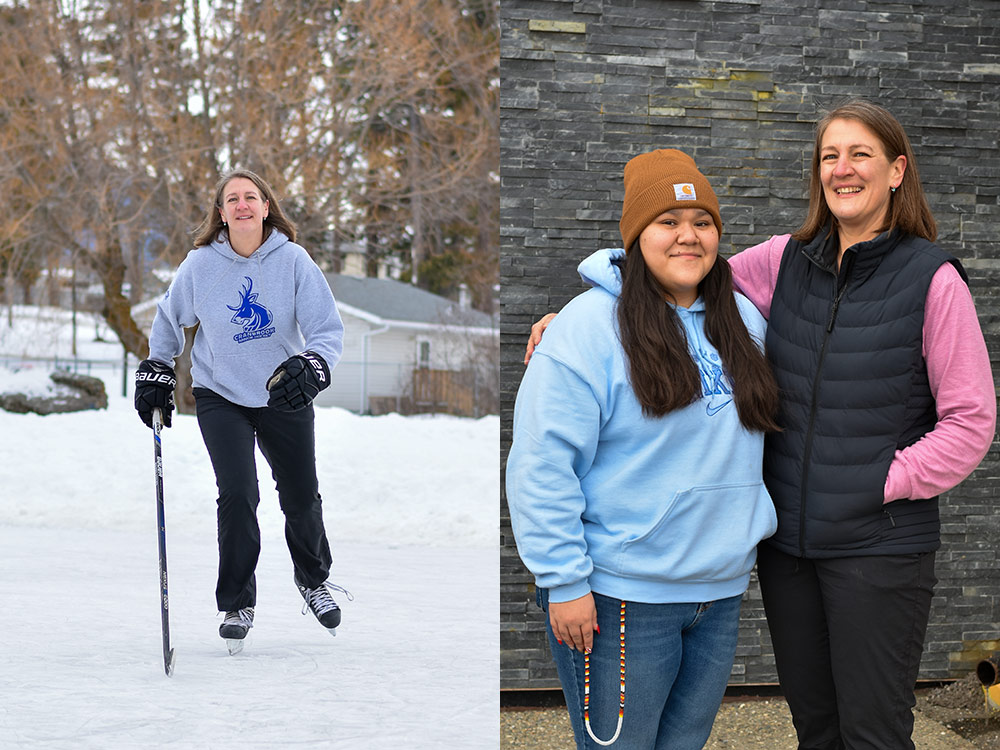
Bobby-Jo’s “right-hand woman” in the program is 21-year-old Caytlyn Luke, who played hockey alongside her brothers and father as a kid. One day, Bobby-Jo called and asked if she might consider being a mentor and a coach.
“I grew up playing boys hockey. I got changed in the hallway,” Luke says.
For her, coaching in the program draws a line from her father, a hockey coach she looks up to, through to Bobby-Jo, a “mother figure,” through herself, to the girls on the ice.
“A lot of it has to do with respect and compassion,” Luke says. “Bobby-Jo is very determined and she believes in everyone. Everybody has a role, and it’s a different role, but you all come together to make up a team.”
Luke is a member of the Ktunaxa Nation; last year, she bonded with a player from the same nation on the ice, and she hopes for more.
“Representation is important. I think it’s nice that she saw someone from the same nation [on ice] at the same time. Part of this is me changing what your typical coach may look like. There are not a lot of First Nations coaches out there.”
Self-esteem, camaraderie, friendship, validation
My five-year-old niece, Sadee, participated in the female development program for the first time this season. When she first set foot on the ice, she was, well, five. Sliding, falling. Crying.
A few practices later, she was sure-footed and confident on skates. She passes like a mini-pro. But most importantly: she loves all of it. She’s a hockey player. Whether that becomes her job or not hardly matters now. I mean, she’s five. But also, that’s not the point of this program. The point is the play. What matters is what she’s getting while she’s here.
I ask what she likes about Bobby-Jo. “I like about Bobby-Jo that she helps me when I fall,” Sadee says. Amen, sister.
On the ice, players find skills — the program teaches Hockey Canada curriculum — but also self-esteem, camaraderie, friendship, validation. Everyone involved has to do community service, raising money for the local food bank, diapers for Better Babies, Christmas Kettles. They belong. They matter. They feel free to fail and try again. They grow.
Across B.C., girls hockey enrolment is growing while boys enrolment has stagnated. But most small towns don’t have a female development program — so what explains the gap?
Part of it might be that boys hockey is now rife with the sense that the system is rigged. “[A boy] can basically play wherever you can afford to send them. It's not about skill anymore,” Bobby-Jo says. “Up to their Bantam draft, you can buy your way into any academy or any school. People are sending their kids away at peewee age to go live in cities.”
Men’s hockey at all levels garners a degree of media attention and cultural reverence that women’s hockey only gets when championships are on the line. This is something players are acutely aware of; as Calissa says, the female development program exists in part to “make women’s hockey grow to have as much interest as men’s hockey.”
But this inherent truth comes with pressure: it’s the NHL or bust. Add to that the rise of lacrosse and soccer in the region, and hockey seems to be taking up less space in the local imagination. At the amateur level, boys, seeing other options — or the writing on the wall — are starting to opt out.
I wonder if boys hockey was more often treated holistically, as it’s approached by the female development program, how boys might be different. What they’d learn about themselves, too.
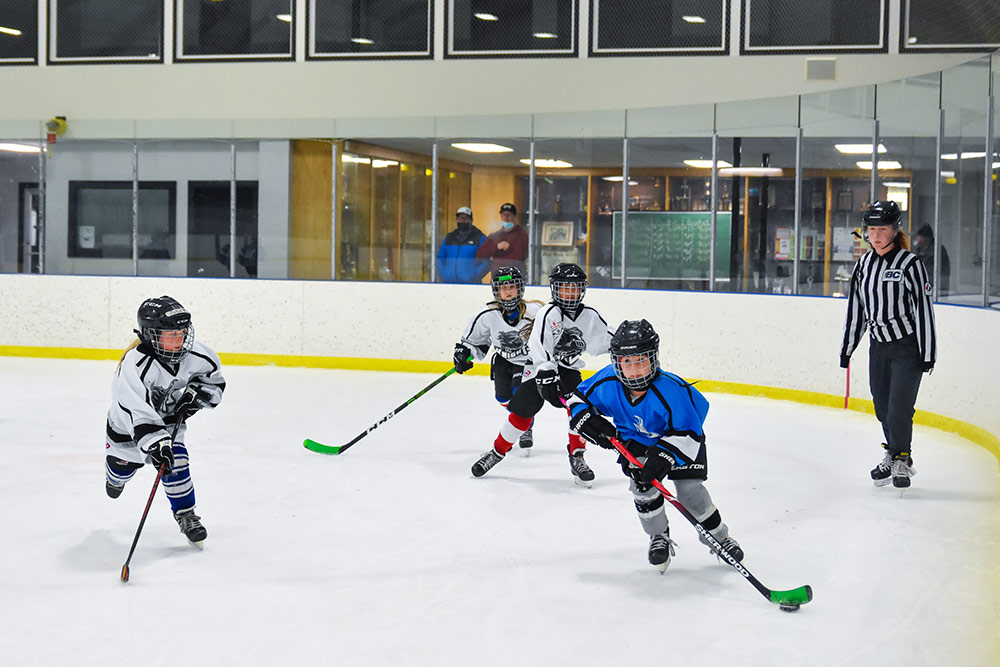
Of course, part of the elitism in hockey is the cost of gearing your kid up to play, of paying for coaching and ice time. This keeps kids of all genders away from the sport. At a recent program practice, a kid was missing some gear. My sister Callie happened to be the one to volunteer to go grab it from Bobby-Jo’s truck. “The entire back of her truck is filled with extra gear. Multiple pairs of skates, pads,” Callie told me.
“Anytime there is any interest from a new girl to join the program or even just to try it out, [Bobby-Jo] will help them to find any additional equipment they might need to get them on the ice,” Moulton adds.
Having gear means no one misses out. And missing out has a cost. “There are girls on my team that I know need to be there. Cause I know what families they come from. And my job is to keep them coming,” Bobby-Jo says.
A rink of one’s own
In the summers, Bobby-Jo also runs girls softball. She watches the girls up at bat, and often their dads stand at the fence and side-coach them. They can’t do this in hockey, physically, but in softball there’s only a wire cage separating them. Bobby-Jo watched this happen over and over. She saw body language shift. With dad in their ear, it was different. Their confidence waned. They screwed up. They cried. So Bobby-Jo sent an email to parents reminding them, nicely, not to do this.
“They want to please you so badly that they will forget everything they've been taught by their coach and just hear your words,” she wrote. “And then, they just kind of crumble.”
In response, a dad whose daughter had been joyfully playing hockey with Bobby-Jo for three years, and softball for one, pulled his kid out of both.
Then there’s the girl in the hockey program with bad anxiety. At the start of practice, her dad volunteered to skate out with her, insisting she’d do better with him on the ice. He was gently rebuffed. Instead, Bobby-Jo made the girl captain for the day, and without hesitation she skated out on her own, head high.
Every season, dads ask if they can help and coach, and every year they are politely told that this space is not for them. As my niece says: “No boys allowed!” Bobby-Jo had never heard of Virginia Woolf, or the notion of a “room of one’s own,” but that didn’t stop her from building it.
Every season, the program gets more and better ice time. It makes money, which gives it power (and which calls to mind the second half of Woolf’s quote, the part that often gets lopped off: what a woman needs is a room of her own and money). Now, 20 per cent of Cranbrook Minor Hockey’s income comes from girls. There is enough momentum that other nearby towns are following suit. There are now girls-only development programs in several communities in the region, including with Jenn Stevens in Sparwood, B.C.
Not one person says the word “feminism” when they’re talking about all of this. But you don’t have to say the quiet part loud when your actions speak louder than words ever could.
‘I’m so happy that she has a supportive space’
They step on the ice and it’s go time. That 45 minutes is precious, and it’s used well. No idling. Total presence. Drills merge into passing, shooting, skating. Caytlyn Luke and the other coaches, Bobby-Jo included, make sure everyone gets their moment to try, to fail, to try again. There are now enough girls enrolled that they sometimes play short games against one another, but the scores are quickly forgotten. They get off the ice. They go home. They wait with excitement for the next time, and in the meantime they move through the world a little differently. A little taller. A little less concerned with what boys think.
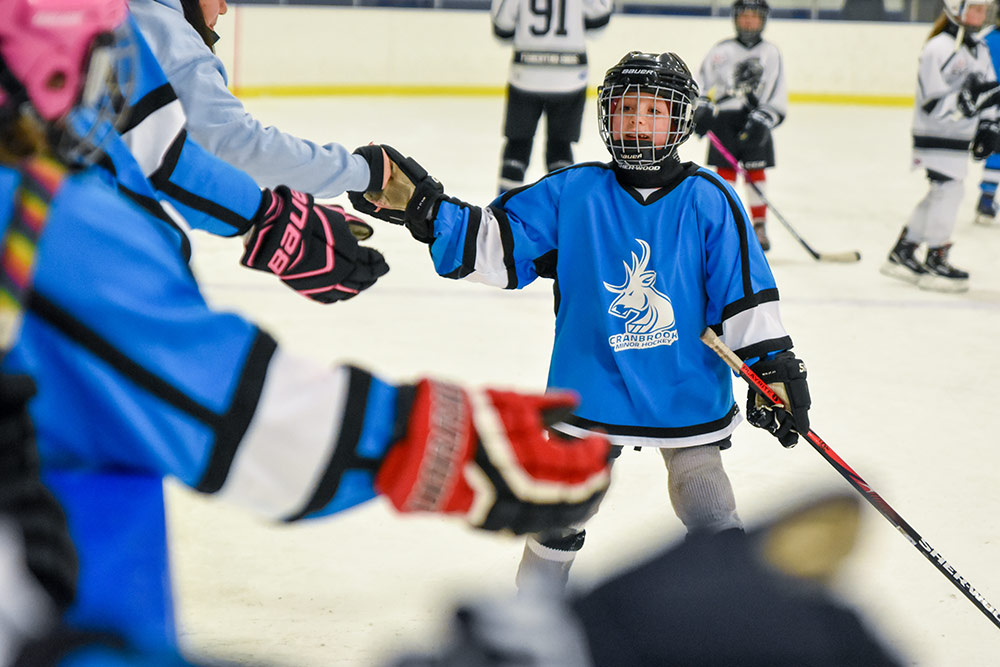
So it doesn’t start in the parking lot, not really. It starts even earlier. It starts with Bobby-Jo, why she became the kind of person to notice the patterns and do something about it. But she doesn’t want to talk about who she was before, despite my wishes to infuse this piece with a few key moments from her childhood that hint at the person she will become. “Where did you grow up, and what were you like as a kid,” I ask, brightly, over Zoom one afternoon.
“I won’t be talking about that,” she says. This takes me by surprise — but maybe it's linked to her desire to avoid being the focus of this piece. And in some ways, it doesn’t matter. What matters isn’t who Bobby-Jo was, then, but what she does now.
About a month ago, as the season was coming to an end, Bobby-Jo handed out jerseys. The local junior team is called the Bucks, and Bobby-Jo had modified the logo, making her players the Does. “The past couple nights I could hear my daughter downstairs announcing herself in a starting lineup as a member of the Cranbrook Does,” Tyrell Moulton says. “The same thing she would say after scoring a goal.”
“I emailed a parent the other day to tell her that her daughter was such a treat to have. She listens, she asks questions,” Bobby-Jo says. “She emailed me back and said ‘Thank you. Because she has been having trouble at school with bullies. She's really sad.’”
Bobby-Jo’s voice breaks a little. “[The parent] said, ‘I’m so happy that she has a supportive space.’”
*Story updated at 9:12 p.m. on March 31, 2022 to correct the number of daughters Jodi Hoyt has on Bobby-Jo's team and Tyrell Moulton has in the female development program.
**Story updated at 7:20 p.m. on April 3, 2022 to correct the name of one of the mothers commenting on their daughter's experience in the league. ![]()
Read more: Health, Gender + Sexuality


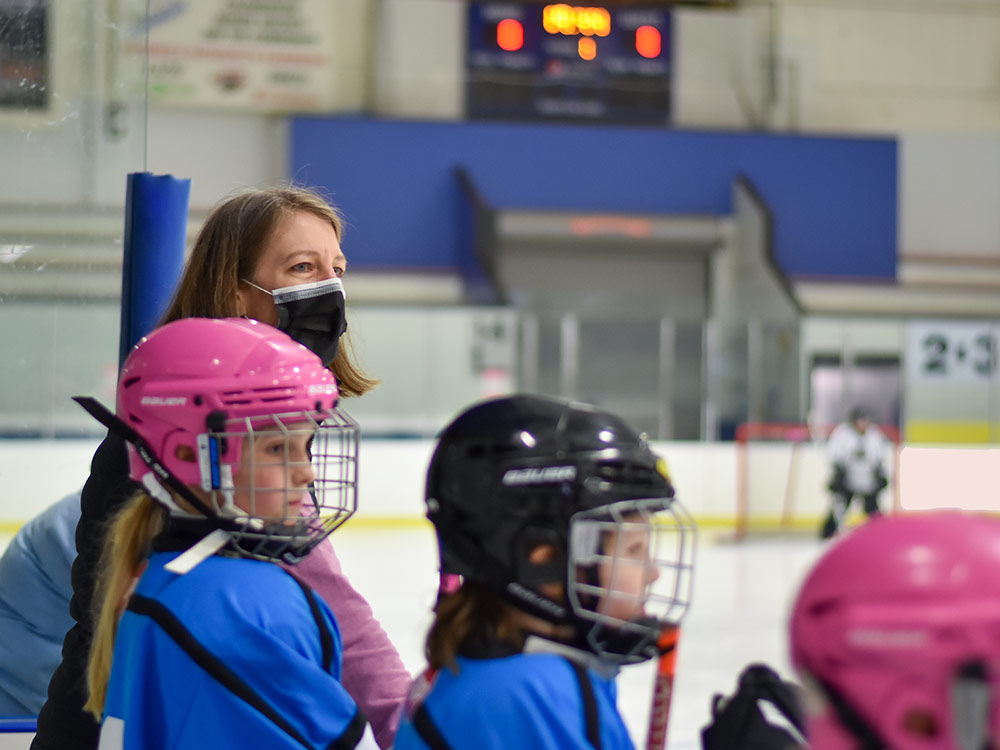












Tyee Commenting Guidelines
Comments that violate guidelines risk being deleted, and violations may result in a temporary or permanent user ban. Maintain the spirit of good conversation to stay in the discussion.
*Please note The Tyee is not a forum for spreading misinformation about COVID-19, denying its existence or minimizing its risk to public health.
Do:
Do not: